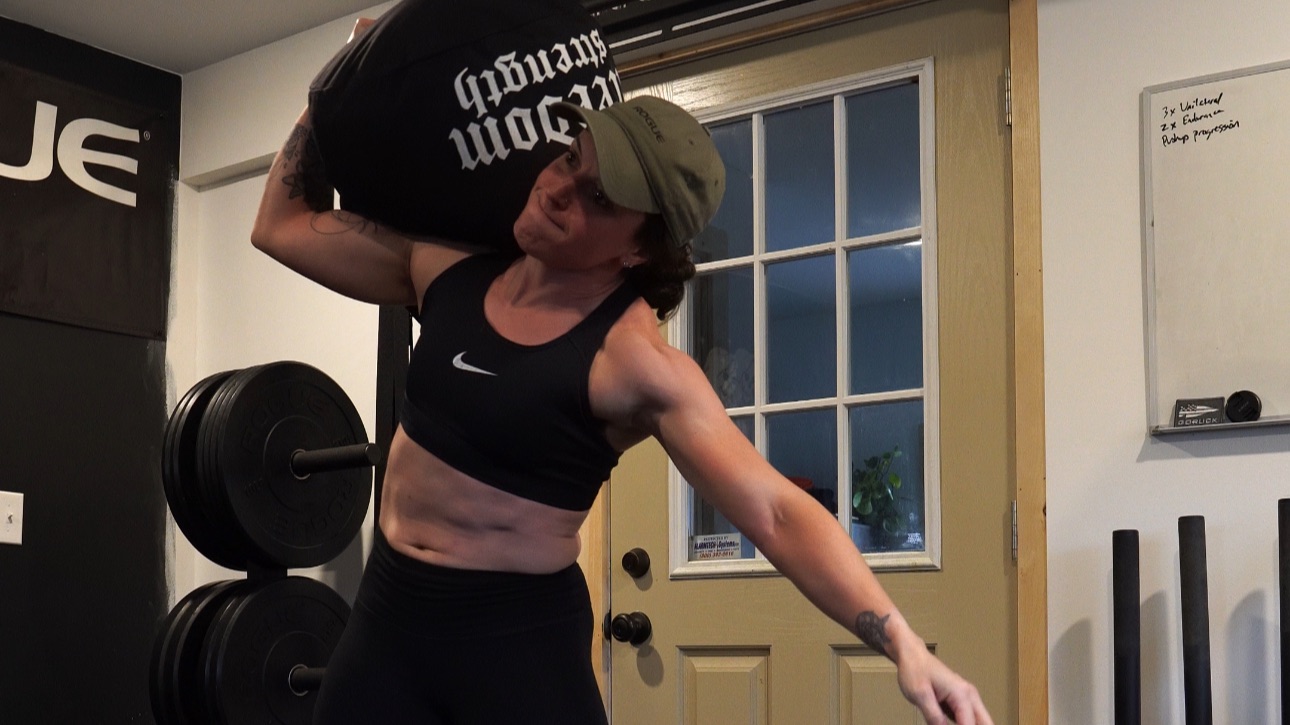Unconventional Training: Strength & Conditioning Beyond the Norm
Feb 16, 2025
Unconventional training isn’t unconventional because it’s ineffective or new, it’s just not the standard barbell and dumbbell dominated approach that most people think of when they hear “strength and conditioning.”
Instead, it’s a mix of old school training methods and movement patterns that are evolving, and the use of non-traditional equipment to build functional strength, resilience, all around conditioning, and athleticism.
And let’s be honest... it’s also just a hell of a lot more fun for most people. Slamming, swinging, throwing, etc. can really blow off some steam. I think we all need a little more of that in our lives.
What Is Unconventional Training?
Unconventional training is a broad term that encompasses training methods and tools that stray from mainstream strength and conditioning programs. Rather than relying solely on fixed planes of motion and rigid rep schemes, this style of training challenges the body in multiple dimensions, incorporating movement patterns that mimic real world strength demands.
It's not some new age fitness fad, either. These methods have been around for centuries. From ancient Persian warriors wielding heavy clubs to strongmen lifting odd objects, unconventional training is simply a modern resurgence of old school strength and athleticism. It’s just now getting the recognition it deserves.
The Tools of the Trade
To train unconventionally, you don’t need a fancy gym. You need tools that test your grip, trunk, and coordination in ways traditional training often ignores. I speak for myself and most of the unconventional training community when I say that here's our equipment of choice:
-
Kettlebells – A staple in unconventional training, kettlebells challenge strength, power, and endurance through dynamic movements like swings, snatches, and Turkish get-ups.
-
Sandbags – They don’t care about being easy to lift. Sandbags shift and move, forcing your stabilizers to work overtime. Whether you’re carrying, shouldering, squatting, slamming, or pressing them, they teach you how to manage awkward loads in a way that translates to real life strength. They're brutal every time, no matter how good you get.
- Steel Maces & Steel Clubs – Incredible for shoulder mobility, grip strength, rotational power, and full-body coordination. Swinging a mace or club requires controlled aggression and precision, making it a great tool for both strength and conditioning.
-
Tractor Tires – Perfect for flipping, dragging, jumping onto, and slamming a steel mace or sledgehammer on, tractor tires develop explosive power, endurance, grip, and full body coordination.
-
Landmines – A versatile tool for rotational strength, pressing, and explosive movement patterns.
-
Ropes – Battle ropes improve conditioning, grip strength, and power endurance while providing an intense metabolic challenge.
-
Rings – Gymnastic rings develop upper body strength, stability, and coordination through challenging bodyweight movements.
Why I Started Training Unconventionally
Over the past 3-4 years, I’ve found myself drawn more and more to unconventional training. Not for any reason other than—it’s fun. It keeps training exciting and challenging, constantly forcing me to learn new skills, refine movement patterns, and push my own boundaries.
There’s something incredibly rewarding about the constant evolution that comes with these tools. Whether it’s learning a more efficient way to swing a mace or discovering how a heavy sandbag carry translates to real-world strength, unconventional training keeps me engaged in a way traditional lifting never did.
View this post on Instagram
The Benefits of Going Unconventional
-
Increased Core Strength & Stability – Most unconventional tools are unbalanced or offset, forcing your core to work harder to stabilize every movement.
-
Enhanced Mobility & Coordination – Unlike rigid barbell lifts, these movements challenge your ability to control and coordinate strength in multiple planes of motion.
-
Improved Grip Strength – If you want a vice grip, start swinging a steel club or wrestling a sandbag.
-
Mental Engagement & Longevity – Learning new movements and training in dynamic ways keeps the mind engaged and the body resilient over the long haul.
So...
Unconventional training isn’t a replacement for traditional strength work... it’s an evolution of it. It takes foundational principles and applies them in more dynamic ways. And for me, that’s what training should be about: building strength that serves a purpose, being as durable as possible, developing skills that translate beyond the gym, and most importantly -- having fun while doing it.
So, if you’re looking to break out of the mundane, challenge your body in new ways, and build strength that applies to real life, give unconventional training a shot. You might just find yourself hooked, like I did.

